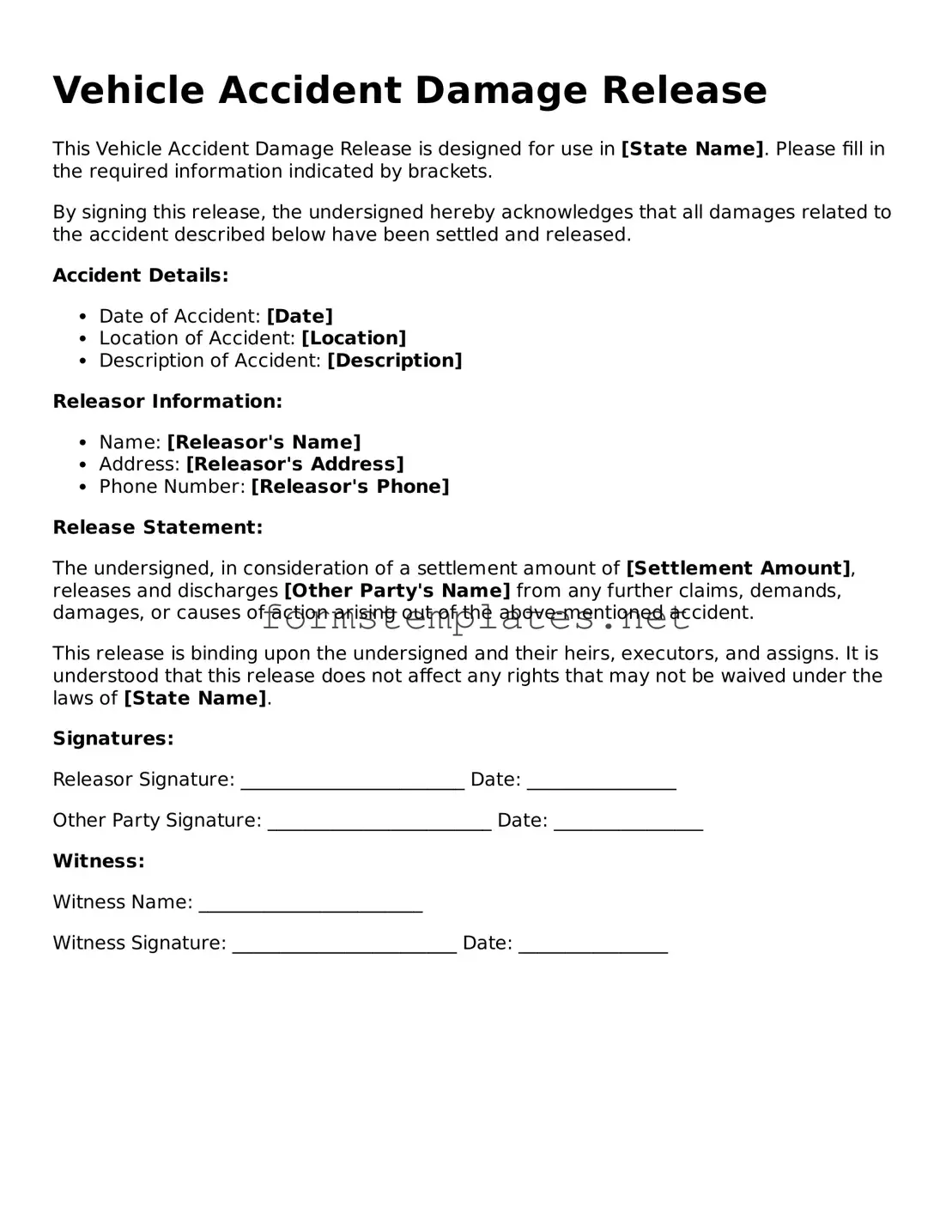Vehicle Accident Damage Release
This Vehicle Accident Damage Release is designed for use in [State Name]. Please fill in the required information indicated by brackets.
By signing this release, the undersigned hereby acknowledges that all damages related to the accident described below have been settled and released.
Accident Details:
- Date of Accident: [Date]
- Location of Accident: [Location]
- Description of Accident: [Description]
Releasor Information:
- Name: [Releasor's Name]
- Address: [Releasor's Address]
- Phone Number: [Releasor's Phone]
Release Statement:
The undersigned, in consideration of a settlement amount of [Settlement Amount], releases and discharges [Other Party's Name] from any further claims, demands, damages, or causes of action arising out of the above-mentioned accident.
This release is binding upon the undersigned and their heirs, executors, and assigns. It is understood that this release does not affect any rights that may not be waived under the laws of [State Name].
Signatures:
Releasor Signature: ________________________ Date: ________________
Other Party Signature: ________________________ Date: ________________
Witness:
Witness Name: ________________________
Witness Signature: ________________________ Date: ________________
